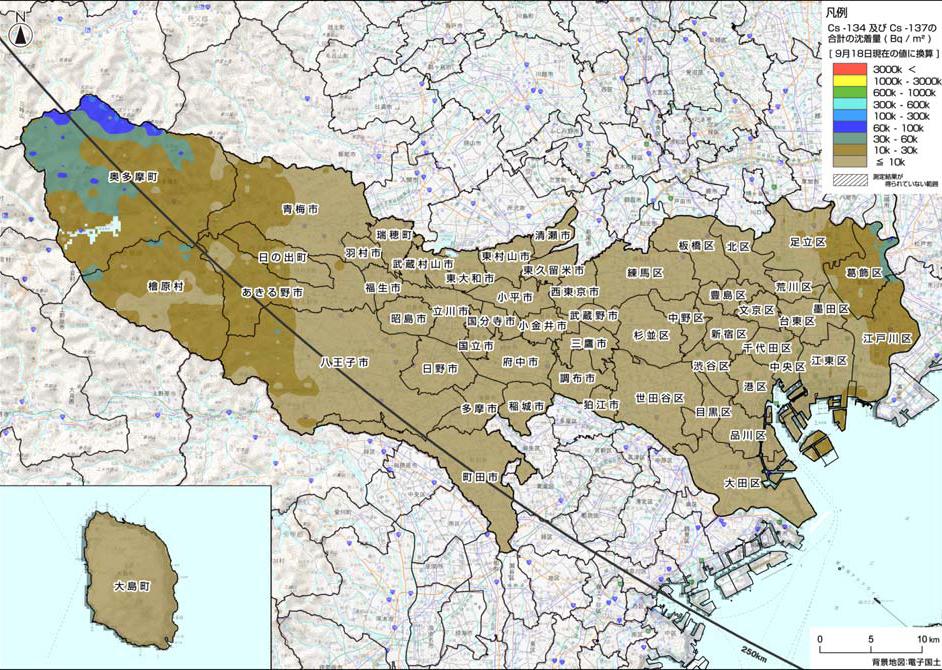– Tokyo Metropolitan Government Measures Soil Contamination in Shinjuku (EX-SKF, Oct. 8, 2011):
And it is higher, much higher than the Ministry of Education’s aerial survey indicates.
First, to recap, according to the just released Ministry of Education’s aerial survey of radioactive cesium deposition in Tokyo, most of Tokyo has less than 10,000 becquerels/square meter of radioactive cesium, with the exception of the western-most Okutama and the eastern special wards (“ku”) bordering Chiba Prefecture to the east.
Now, it turns out that the Tokyo Metropolitan government, who is not so eager to measure anything radioactive since March 11, was doing its annual survey of soil contamination in Shinjuku and quietly released the data on September 20.
The soil sample was taken at Tokyo Metropolitan Institute of Public Health in Hyakunin-cho, Shinjuku-ku, as it has always been done. (That’s where the official air radiation level is monitored every day for Tokyo.)
For the last 5 years, radioactive iodine and cesium-134 were not detected, and cesium-137 was 2 to 3 becquerels per kilogram.
Now, this year, the numbers for the soil from the surface to 5 centimeters deep were:
- Iodine-131: ND
- Cesium-134: 360 becquerels/kg
- Cesium-137: 430 becquerels/kg
- Total cesium: 790 becquerels/kg
To convert from “per kilogram” to “per square meter”, Japan’s Nuclear Safety Commission uses the factor of 65. The total cesium per square meter in Shinjuku therefore is: 51,350 becquerels per square meter.
Even if you just take cesium-137 (for comparison purpose), 430 becquerels/kg translates to 27,950 becquerels/square meter.
